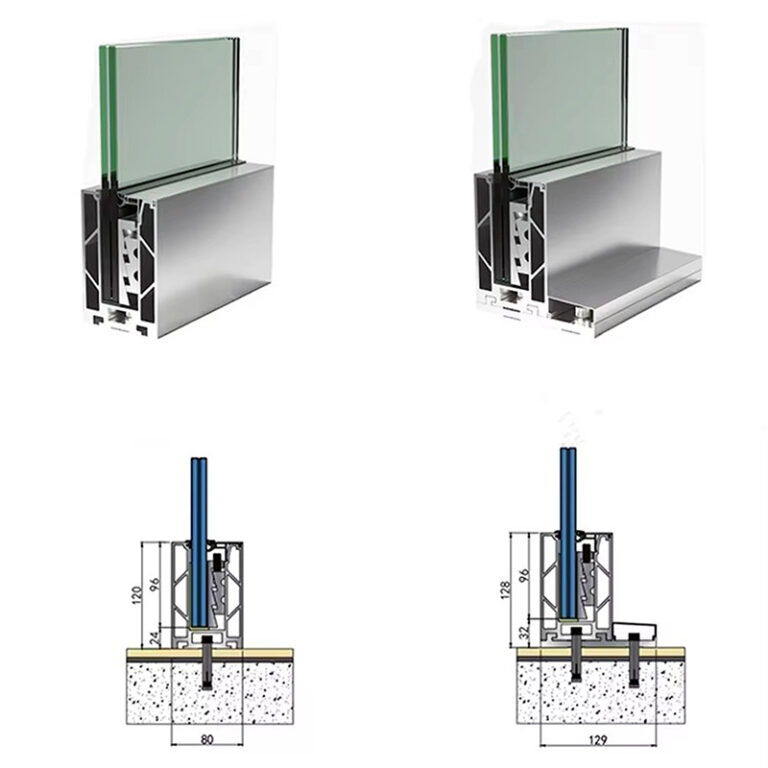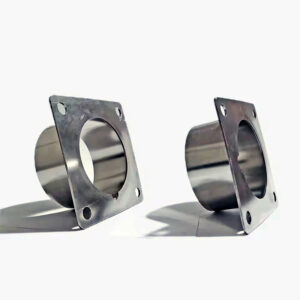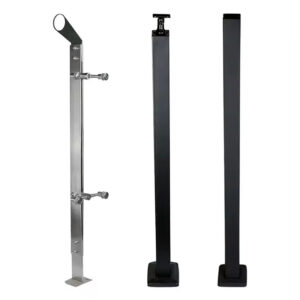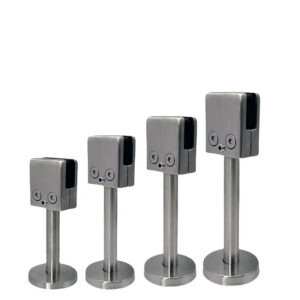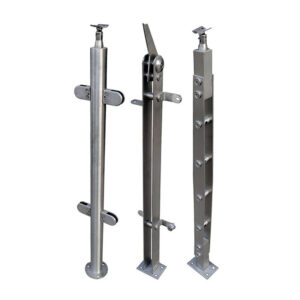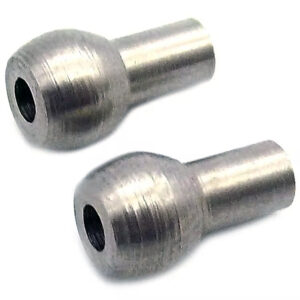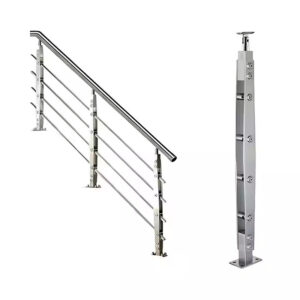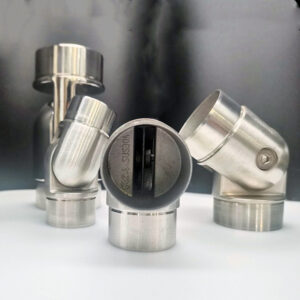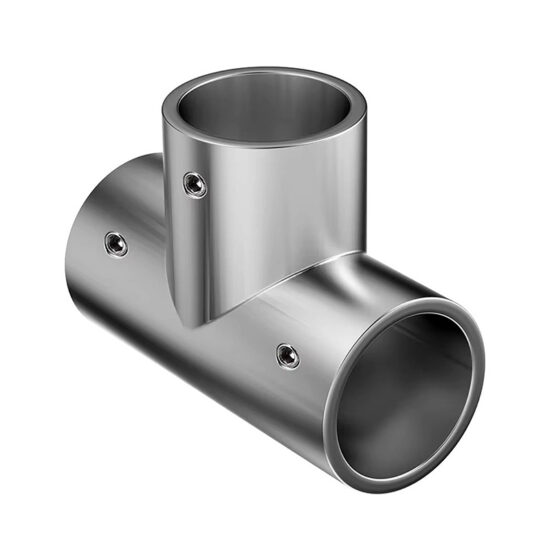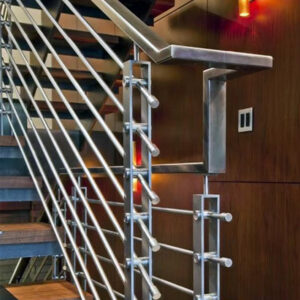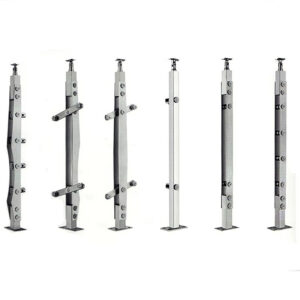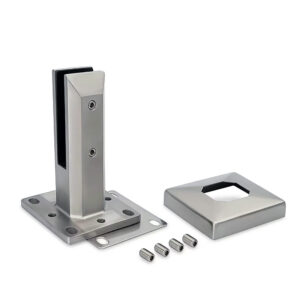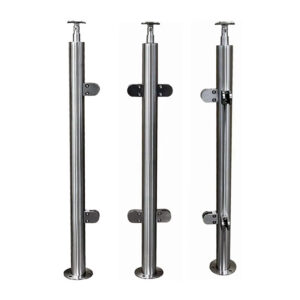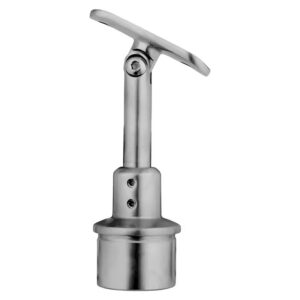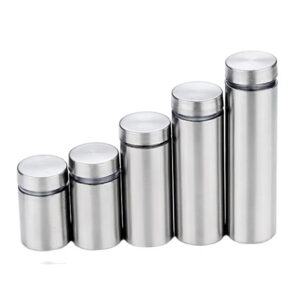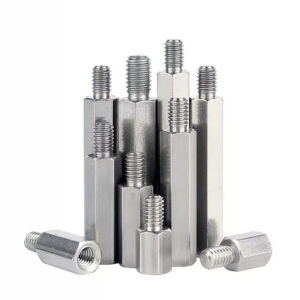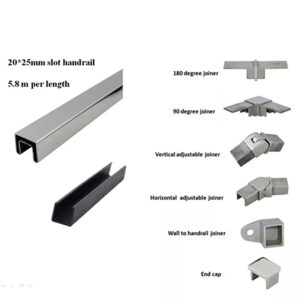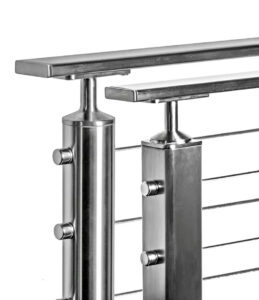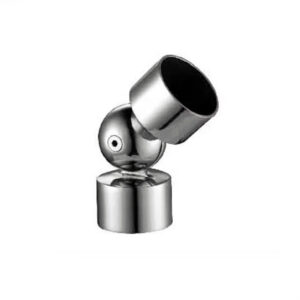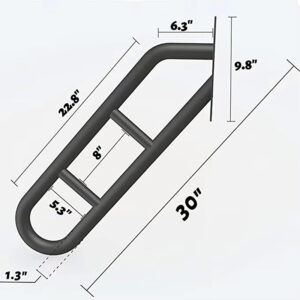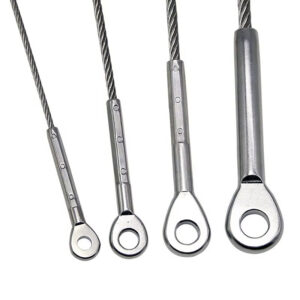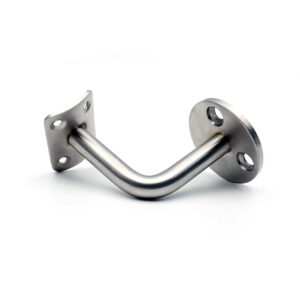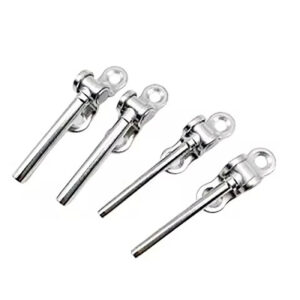Finding structural glass railing systems that deliver on promises isn’t easy. After 23 years manufacturing stainless steel hardware, we’ve seen what happens when components don’t fit, specs don’t match reality, or materials fail prematurely. Smart contractors and distributors want systems that install efficiently, meet codes reliably, and perform consistently over time. Here’s what works in structural glass base rails and supporting hardware.
Complete Structural Glass Rail Systems
Base Rail Components and Performance
Structural Glass Base Rails form the foundation of reliable glass railing systems. Our base-mounted systems use 316L stainless steel construction for structural integrity, with precision-machined channels that accommodate 12mm to 19mm tempered glass panels. The continuous base rail design distributes loads evenly while providing weather-tight sealing.
Key specifications include:
- Load capacity: 200 lbs/linear foot distributed load per IBC requirements
- Glass accommodation: 12mm, 15mm, 17.5mm, 19mm tempered safety glass
- Base width: 2.5″ standard, 3″ for high-load applications
- Drainage: Integrated weep holes every 24″ prevent water accumulation
Glass Clamp Systems secure panels without drilling glass. Spring-loaded clamps maintain consistent pressure across temperature changes, while neoprene gaskets provide weatherproofing. Installation typically takes 15-20 minutes per linear foot with standard tools.
Structural Posts and Mounting handle point loads and provide system stability. Posts accommodate both base-mounted and surface-mounted configurations, with adjustable connections for field conditions. 316 stainless construction prevents corrosion-related failure in coastal and industrial environments.
Material Selection That Makes Sense
| Steel Grade | Best Applications | Corrosion Resistance | Cost Factor |
|---|---|---|---|
| 304 Stainless | Interior, dry environments | Good for most conditions | Base cost |
| 316 Stainless | Coastal, chemical exposure | Superior marine performance | 15-25% premium |
| 316L Stainless | Welded assemblies, structural | Excellent weld zone protection | 20-30% premium |
Surface treatments affect both appearance and maintenance:
- Brushed finish: Hides minor scratches, easier field maintenance
- Mirror polish: Premium appearance, higher maintenance requirements
- Satin finish: Balance of durability and appearance for commercial use
Technical Specifications for Real Applications
Load Ratings and Code Compliance
Structural glass base rails must meet IBC Section 1607.8 for live loads and Section 1604 for wind loads. Our testing data shows consistent performance across temperature ranges.
| Application | Live Load (psf) | Wind Load Rating | Glass Thickness | Base Rail Size |
|---|---|---|---|---|
| Residential | 20 psf minimum | 90 mph basic wind | 12mm tempered | 2.5″ standard |
| Commercial | 50 psf minimum | 110 mph basic wind | 15mm tempered | 3″ reinforced |
| High-rise | 50 psf + wind | 130+ mph design | 17.5-19mm | 3″ with anchors |
| Industrial | 75 psf design | Varies by exposure | 19mm minimum | Custom engineering |
Installation Time Estimates
Based on contractor feedback from 200+ projects:
| System Type | Linear Feet/Day | Crew Size | Critical Factors |
|---|---|---|---|
| Straight runs | 40-60 ft/day | 2-person crew | Level base, proper anchoring |
| Corner transitions | 25-35 ft/day | 2-person crew | Field measurements, adjustment time |
| Stair applications | 20-30 ft/day | 2-person crew | Angle cuts, code compliance checks |
Project Applications and Performance Data
Commercial and Office Buildings
Multi-story office complexes benefit from standardized systems. A recent 12-story project in Chicago used continuous structural glass base rails across 2,400 linear feet. Installation averaged 45 feet per day with minimal field modifications. The modular approach reduced inventory complexity and allowed phased installation across construction schedules.
Key performance metrics:
- Installation time: 30% faster than custom fabrication
- Field modifications: Less than 5% of components required adjustment
- Weather delays: Minimal impact due to pre-fabricated precision
- Maintenance: Annual inspection only, no component replacement in 5 years
Marine and Coastal Applications
Waterfront developments demand 316L structural glass manufacturing for corrosion resistance. A marina project in Florida has performed without maintenance for 7 years in direct salt spray exposure. The structural glass rail fabrication 316L construction prevents the pitting and staining common with lower-grade materials.
Marine-specific requirements:
- 316L stainless throughout for galvanic compatibility
- Enhanced drainage systems prevent standing water
- Sacrificial anodes where dissimilar metals meet
- Quarterly inspection schedules with documented performance
▶ Discuss Your Marine Project ◀
Industrial and Manufacturing Facilities
Heavy industrial environments require custom structural glass manufacturing to handle chemical exposure and mechanical loads. A chemical processing plant installation demonstrates how precision structural components maintain safety standards while reducing maintenance costs.
Industrial performance factors:
- Chemical compatibility testing for specific environments
- Enhanced anchoring for vibration and dynamic loads
- Emergency egress compliance with OSHA standards
- Maintenance scheduling that doesn’t disrupt operations
Residential and Multi-Family Housing
Large residential developments leverage commercial structural base rails for cost efficiency and code compliance. Standardization across multiple buildings reduces inventory costs while ensuring consistent quality.
Residential advantages:
- Bulk purchasing reduces per-unit costs
- Standard details simplify permit approval
- Consistent appearance across development phases
- Reduced warranty issues from proven components
Installation Support and System Integration
Modular Design Benefits
Pre-engineered components reduce field labor and improve quality control. Standard connections accommodate normal construction tolerances while maintaining structural integrity. Our modular approach typically cuts installation time by 25-35% compared to fully custom systems.
Field Adjustment Capability handles real-world conditions without custom fabrication. Adjustable post connections accommodate ±1/2″ height variations, while sliding base connections handle length variations up to 3/4″ per 10-foot section.
Quality Control and Testing
Manufacturing precision ensures components fit properly the first time. CNC machining maintains tolerances within ±0.005″ for critical dimensions. Batch testing verifies material properties and dimensional accuracy before shipping.
▶ Talk to Our Quality Engineers ◀
Quality verification includes:
- Material certification for each heat of stainless steel
- Dimensional inspection on statistical sampling
- Finish quality assessment and documentation
- Pre-shipment fit testing of complex assemblies
Frequently Asked Questions
How do I choose between 304 and 316 stainless steel for structural glass systems?
Use 316 stainless within 10 miles of saltwater, in industrial chemical environments, or where chloride exposure exceeds normal levels. 304 stainless works well for interior applications and most urban environments. The 15-25% cost premium for 316 typically pays off in reduced maintenance and longer service life in harsh environments.
What’s the real installation time for structural glass base rail systems?
Experienced crews average 40-50 linear feet per day on straight runs with proper preparation. Corner details and stair applications slow progress to 25-35 feet per day. Weather, site access, and coordination with other trades significantly impact scheduling. Plan for 20% contingency time on complex projects.
How do marine grade structural glass systems ODM services work?
Custom manufacturing starts with environmental analysis and load calculations. We provide design assistance, engineering calculations, and shop drawings for approval. Lead times typically run 4-6 weeks for standard modifications, 6-8 weeks for complete custom systems. Early involvement in project planning prevents schedule delays.
What maintenance do commercial structural base rails actually require?
Annual visual inspection catches most issues early. Clean with mild detergent and water every 3-6 months depending on environment. Check drainage holes monthly in areas with heavy precipitation. Coastal installations need quarterly inspection for salt buildup. Most systems require no component replacement for 10+ years with proper maintenance.
Do structural glass systems work with different glass manufacturers?
Our base rails accommodate standard glass thicknesses from major manufacturers. Glazing gaskets adjust for normal thickness variations (±0.5mm typical). We maintain compatibility data for common architectural glass types. Non-standard glass may require custom gaskets or modified clamp systems.
How do you handle thermal expansion in long glass rail runs?
Expansion joints every 40-60 feet accommodate thermal movement. Base rail systems use sliding connections at posts to prevent binding. Glass panels float in gaskets with controlled contact pressure. Calculate expansion based on local temperature range and material coefficients. Proper expansion control prevents glass breakage and system binding.
Performance Comparison and Selection Criteria
System Type Comparison
| System Approach | Installation Speed | Cost Factor | Customization | Best Applications |
|---|---|---|---|---|
| Fully Custom | Slow (20-30 ft/day) | Highest cost | Unlimited | Unique architectural requirements |
| Semi-Custom | Medium (35-45 ft/day) | Medium cost | Limited options | Standard with modifications |
| Modular Standard | Fast (45-60 ft/day) | Lowest cost | Standard sizes | Repetitive installations |
| Esang Metal Systems | Fast (40-55 ft/day) | Competitive | Flexible standard | Balanced performance/cost |
Selection Criteria for Different Projects
Budget-Driven Projects: Standard modular systems provide code compliance and reliable performance at lowest installed cost. Focus on 304 stainless for interior applications, proven designs for minimal engineering costs.
Performance-Critical Applications: 316L structural systems with enhanced engineering documentation. Include environmental testing data and extended warranty coverage. Plan for higher upfront investment with lower lifecycle costs.
Fast-Track Schedules: Pre-engineered systems with documented lead times. Standardize details early in design process. Include installation support and field coordination services.
Complex Architectural Requirements: Custom structural glass manufacturing capability with full engineering support. Balance custom elements with standard components where possible to control costs and schedules.
Based on 23 years of manufacturing experience, the most successful projects combine standard components where possible with custom engineering only where truly needed. This approach optimizes cost, schedule, and performance across diverse applications.
▶ Connect with Our Technical Team ◀
“Standardized structural glass systems reduce total project cost by 15-25% while improving installation reliability.” —National Association of Construction Engineers
“Proper material selection for environmental conditions eliminates 80% of premature maintenance issues in glass railing systems.” —Architectural Hardware Institute
“Modular design approaches cut field installation time significantly while maintaining structural performance standards.” —Construction Industry Research Foundation
